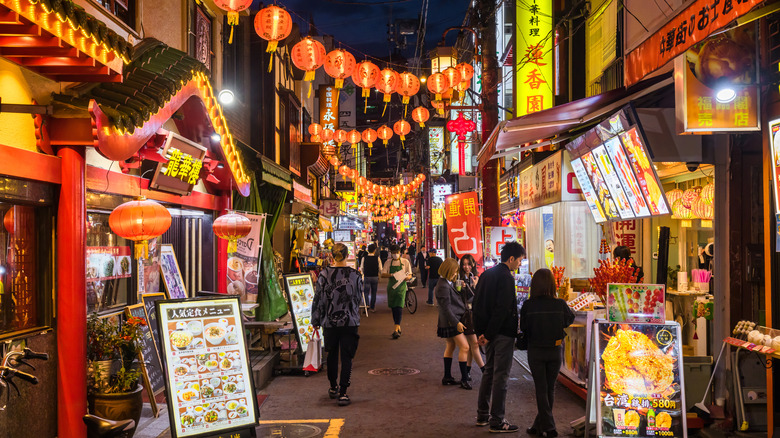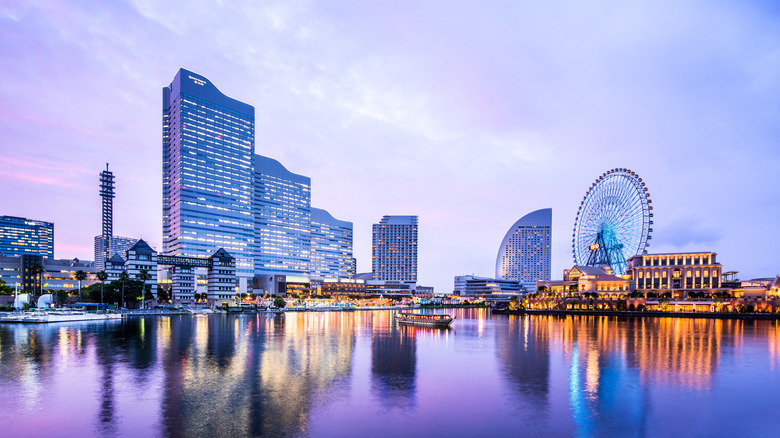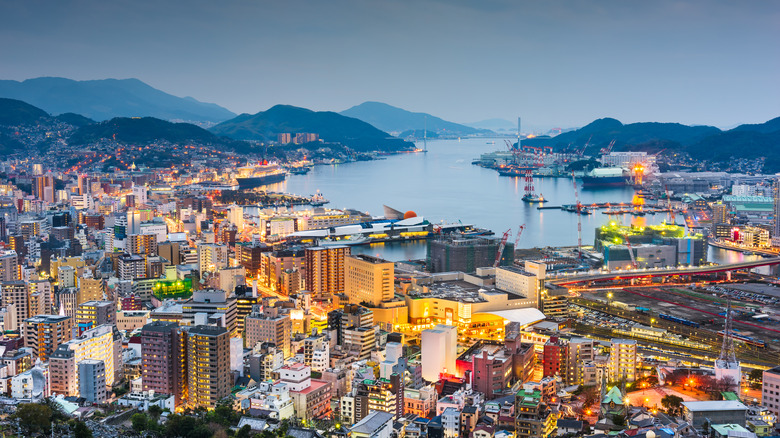These Two Glorious Cities In Japan Are Just As Amazing As Tokyo, But Without The Crowds
As the saying goes, if you're tired of Tokyo, you're tired of life (or something like that). The Japanese capital is a dazzling mix of ancient temples and neon billboards, Michelin-starred restaurants and vending machines serving hot meals. It's a city that has everything and everyone. Tourists from around the world flock to the wonders of Tokyo, and the crowds can sometimes be overwhelming. The good news is that hidden gem cities still exist in Japan. Two of the best are Yokohama, just south of the capital, and Nagasaki, far to the southwest on the island of Kyushu.
These cities offer the same fusion of modernity and tradition, layered cultural history, and rich culinary scenes that visitors love in Tokyo, but with fewer crowds. Both are vibrant port cities with lively Chinatowns that are popular among visitors and have long histories of welcoming the international community. They feature fascinating museums and gorgeous nighttime views, which make staying over a must. Whether you're looking for a city that's a short hop from the capital or you're committed to a longer journey, Yokohama and Nagasaki are just as incredible as Tokyo with a little more room to breathe.
Discover Yokohama's big-city energy
Just half an hour south of the capital by local train (with tickets costing a little over $2), Yokohama makes for an easy day trip from Tokyo. But we think it deserves more than a few hours. As Japan's second-largest city, Yokohama offers plenty for visitors to explore but still manages to feel a bit more relaxed than much larger Tokyo.
The star attraction is Minato Mirai (which means "harbor of the future"), a seaside park of striking skyscrapers, stylish shops, and the brightly lit Cosmo World Ferris Wheel, which has become Yokohama's most iconic landmark. Drop in to the attractive Red Brick Warehouses, a former customs inspection house that is now filled with boutiques and restaurants. The view of Minato Mirai is particularly striking at night, when the buildings and wheel all light up. You also won't want to miss Japan's largest Chinatown, where the streets are lined with stalls selling delicious foods, like steamed buns and ramen noodles.
Ramen might become a theme of your trip to Yokohama, as it's home to two of the most entertaining museums in Japan. At the Shin-Yokohama Ramen Museum, you can slurp your way through mini portions of the dish from across the country on a reconstructed 1950s Japanese street, while the Cup Noodles Museum lets you create your very own cup noodle flavor. It's one of the quirkiest souvenirs you can get in Japan!
Uncover the charms of Nagasaki
The southern city of Nagasaki is in Kyushu, Japan's third-largest island, and a foodie haven. It's a long way from Tokyo, almost seven hours even on the country's lightning-fast bullet trains, but it's just a 90-minute ride from Fukuoka, the island's largest city. The distance from the capital may be a plus, as those who make it will be rewarded with a city that's refreshingly crowd-free.
Internationally, Nagasaki is known as the second city to be hit by an atomic bomb in August 1945. Most visitors begin their journey at the moving Peace Park and the nearby Atomic Bomb Museum, where powerful exhibits and memorials offer a look at the city's past and its message of peace. Entrance to the museum is just $1.40, and the area is reachable in 10 minutes by tram from Nagasaki Station.
After that, you'll discover the many other sides of Nagasaki. Take a stroll through Chinatown and then down to the pretty waterfront district of Dejima, once a man-made island where Dutch traders were confined during Japan's isolationist period, now a great place to grab a coffee or beer. You could also take a boat trip to Gunkanjima, an apocalyptic-looking abandoned island which served as a backdrop for several movies, including "Skyfall." After dark, take the ropeway up to Mount Inasa, which officially has one of the three best night views in Japan. Finally, no trip to Nagasaki would be complete without trying some of its special dishes: sara udon, with crispy noodles, seafood, and vegetables, and Nagasaki chanpon, a rich noodle soup, are local favorites.


